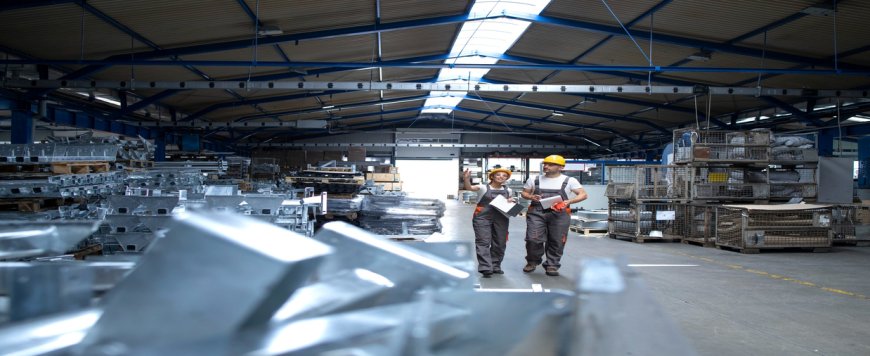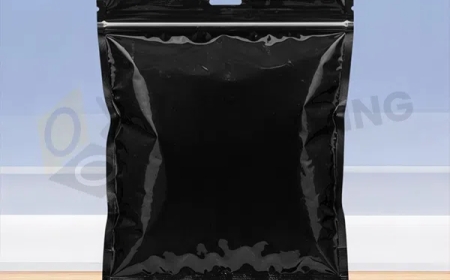Sheet Metal Fabrication: A Concise Guide to the Design Process
This short guide takes you through the process of sheet metal fabrication company design step by step, pointing out the key steps and quality and efficiency factors along the way.

Sheet metal forming is a fundamental process in manufacturing businesses and is employed extensively in the automobile, aircraft, building construction, and consumer durable industries. It allows designers and engineers to start with flat pieces of metal and form functional parts and assemblies therefrom. Concept to finished product, however, needs to be a processone in which design intent, material, manufacturability, and cost converge.
This short guide takes you through the process of Sheet Metal Fabrication Company design step by step, pointing out the key steps and quality and efficiency factors along the way.
What is Sheet Metal Fabrication?
Sheet metal fabrication is a process of producing products or components from thin metal sheets through various processes such as cutting, bending, punching, and assembly. Stainless steel, aluminium, copper, brass, and galvanized steel are common materials with some particular set of benefits depending on the final application.
In comparison to traditional subtractive manufacturing, sheet metal fabrication is a type of forming and assembling process. It is thus scalable and precise in creating complex metal pieces.
Why Design is Important to Sheet Metal Fabrication
Sheet metal designing is more about learning manufacturing limitations and engineering traditions than part designing on paper. Proper design ensures:
- Optimal use of the material
- Acclimation to manufacturing tools
- Minimization of the cost of production
- Structural integrity
- Easy assembly
By not actually sitting down and writing it out, you may have a design that is wonderful on paper but can't be built or is too expensive to build.
Step-by-Step Sheet Metal Design Process
1. Define Functional Requirements
Head start is gained before you've ever set eyes on the CAD computer. Simply say what the part or assembly will do. Ask:
- What does the part do?
- Will it haul freight or be a display vehicle?
- Does it need to resist corrosion, heat, or electrical conductivity?
Solutions
- The answers don't only decide the shape but also decide the choice of material, finish, and production process.
2. Material Selection
Since there are so many different properties that every material possesses, the correct one will have to be chosen. Some things to consider:
- Mechanical properties: Hardness, weight, tensile strength, and ductility
- Corrosion resistance: Required for use or application in chemicals
- Cost and availability: Impacts your cost of production
- Formability: Some can be more readily formed by bending or punching than others
General Sheet Metals:
- Aluminum: Lightweight, corrosion-resistant, also good for enclosures as well as the aerospace market
- Stainless Steel: Hard, corrosion-resistant, good for food processing or medical usage
- Mild Steel: Inexpensive and versatile, frequently used in industrial usage
- Brass and Copper. Uses for electrical or trim components
3. Design for Manufacturability (DFM)
DFM is yet another pillar of sheet metal production. Regulations to reduce manufacturing issues and costs are as follows:
- Supply Uniform Bend Radii: epeat the same bend radii in whatever you do to conserve tooling and furnish equal results.
- Provide for Tolerances: Consider the tolerance of every process. Low tolerance costs money and is complex.
- Use Circular Corners: They minimize stress concentrations and enable a more stable part to stay.
- Provide for Grain Direction: Grain direction in the metal can affect strength and crack response in sheet metal bending.
- Refrain from Difficult Bends: Sharp or steep bends are expensive and might call for special tooling. Avoid wherever possible.
4. Create CAD Models and Flat Patterns
Once the rules of design are combined, a 3D CAD model is derived from software such as SolidWorks, AutoCAD, Fusion 360, or Inventor. Second:
- Create flat patterns: These are your project flat out, which you will need in order to cut and lay out exactly.
- Utilize K-factor values: This takes into account how metal is deformed when bent, which provides you with accurate flat pattern measurements.
5. Select the corresponding fabrication processes
Not all sheet metal parts are created equal. Based on the component shape and material, your operation can be:
- Cutting: Methods can include laser cutting, water cutting, plasma cutting, or shearing mechanically. Laser cutting is precise and ideal for complex geometries.
- Bending: Mounted in roll benders, folding machines, or press brakes. Use V-bending or air bending to achieve precise outputs.
- Punching: Utilize to punch holes, slots, or specialty cutouts on turret punch presses or CNC.
- Stamping: Die stamping in mass production can make several parts simultaneously and to the same production.
- Join an Assembly: Methods are spot welding, riveting, screwing, or bonding adhesively. Limit joins to a minimum of as few as possible in design.
6. Add Finishing Touches
Post-processing contributes to form and function. Depending on how you apply it, finishing may consist of
- Deburring: Cutting off sharp edges or burrs
- Anodizing: Extra corrosion protection and coloration (generally for aluminum)
- Powder Coating: Cosmetic and hard exterior finish
- Plating: Depositing a surface coating on a metal like chrome or zinc.
- Silk Screening: For decoration of logo, labeling, or instructions
Ensure that your design can accomplish the following operations (i.e., filling contact points or holes). Answer:.
7. Prototype and Test
Before mass production, produce prototypes to test: Fit and form Work under stress or load Easy to build Interfitted with other parts It can capture design errors before they continue to cost time and money.
8. Production Ready
After certifying and verifying your prototype, it is now time to prepare it for production. That is:
- Normalizing part sizes where feasible
- Nesting two-dimensional layouts to minimize wastage of material effectively
- Preparation of precise specifications and drawings
- Managing with your fabrication supplier in terms of tolerances, tool paths, and quality checkpoints
Effective Sheet Metal Design Tips Consult the fabricators in advance.
Their suggestions on tooling, tolerances, and manufacturing efficiency can end up making your design.
- Design for scalability: Avoid time-consuming by-hand pieces if you are expecting large volume.
- Use simulation software: Stress, bending, and fatigue can be simulated with software to introduce reliability.
- Intelligent component selection: Add part numbers or direction indicators in your design to facilitate assembly and QC.
Conclusion
Sheet metal manufacturing is technology-driven but very gratifying, with a process that treads a fine line between design precision and manufacturing efficiency. By keeping close tabs on the functional specs, material, tolerances, and manufacturing process, you are able to go from concept to product that not only does what it's supposed to do but also stays within budget.
Design cycle, or idea to CAD and done, is the key to the manufacture of quality, efficient, and long-lasting metal components. Whether it is a single bracket or a complete production chassis, such concepts glide effortlessly from design through to delivery.































